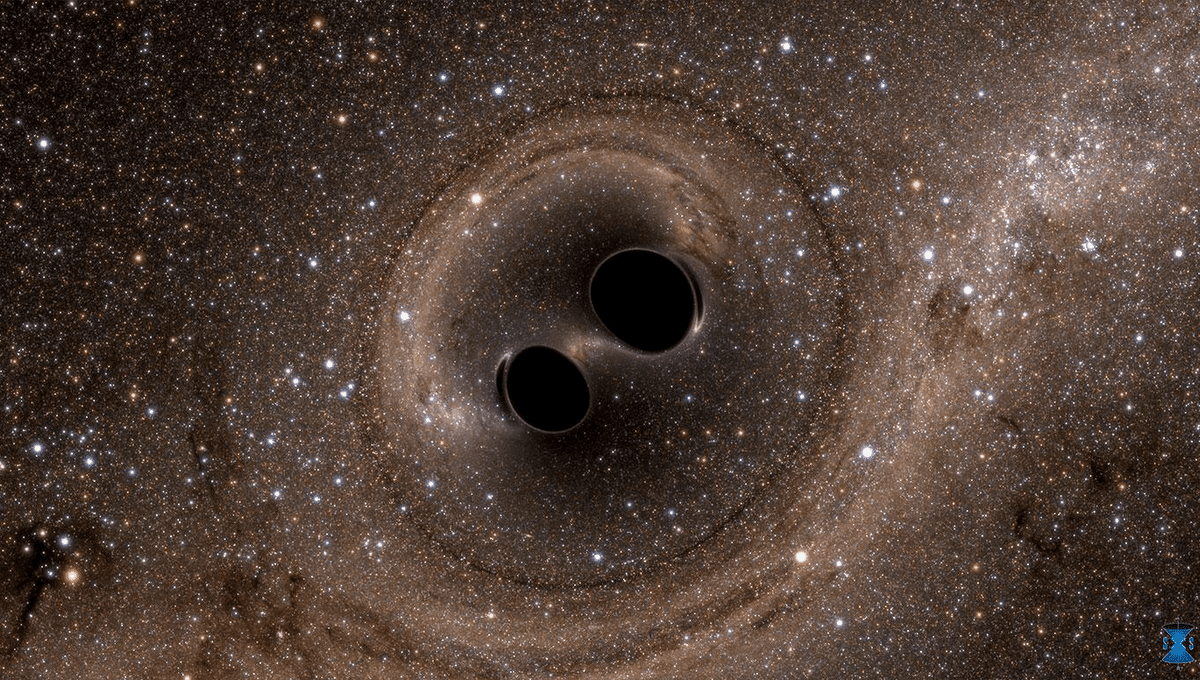
The universe’s expansion stretches space-time itself, including the gravitational waves upon it. The stretching of waves produced when black holes collide could be used to measure that expansion, although we may lack that capacity just yet.
The discovery that the rate of the universe’s expansion is accelerating struck cosmology like a thunderbolt. Nevertheless, details of this acceleration remain elusive. It’s not just that we don’t know what is causing it, other than applying the name Dark Energy – we also don’t know precisely how fast the universe is expanding, or how much that has changed as the universe has evolved. Several methods have been used to measure these things, and their results do not perfectly align.
Two astrophysicists hope to use black hole mergers as a sort of scientific tie-breaker.
Almost a hundred of the ripples in space-time caused by black holes meeting have been detected. Dr Jose Ezquiaga and Professor Daniel Holz of the University of Chicago propose in a new paper in Physical Review Letters that this constitutes a sample large enough to make comparisons between the nearby (cosmologically speaking) collisions and those more distant.
“For example, if you took a black hole and put it earlier in the universe, the signal would change and it would look like a bigger black hole than it really is,” Holz said in a statement.
The extent of the change provides a measure of the expansion of the universe, provided we also know the distance at which the respective mergers occurred.
Unfortunately, to know how much the wave has been altered, we need to know what it looked like originally. For any individual black hole merger that is impossible. However, provided we can assume the mergers happening close to home resemble those during the universe’s “awkward teenage phase”, the situation changes.
“We measure the masses of the nearby black holes and understand their features, and then we look further away and see how much those further ones appear to have shifted,” Ezquiaga said.
Of course, it’s possible there has been some other change over that time. Perhaps black holes in nearby galaxies are larger or smaller than those in galaxies we are seeing as they were five or ten billion years ago. That would be quite likely if we were studying the supermassive black holes at the center of galaxies, but mergers of those are exceptionally rare. Instead, our sample is made up of the much more common case of stellar black holes – formed from supergiant stars – uniting with each other. It’s reasonable to assume peaks and troughs in the mass distribution will prove consistent as the universe evolves.
Although harder to detect at great distances, neutron star collisions could add robustness to the research.
Ezquiaga and Holz call their approach the “spectral siren” method since the waves are stretched like a receding vehicle siren.
The nearby universe, seen at an age within a few billion years of our own, is relatively easy to study. The cosmic microwave background offers us a surprisingly rich insight into the universe’s earliest moments, but the period in between is much harder to study. The authors hope black holes will fill that gap.
Even if our existing sample is not up to the task, researchers only detected the gravitational wave from a pair of black holes six years ago. Progress has been rapid since and the numbers are expected to grow very fast.
Existing methods for measuring the universe’s rate of expansion use type Ia supernovas, among other relatively local measures and the stretching of the cosmic microwave background, which don’t produce perfectly matching results. This suggests our understanding of the physics behind at least one of these is subtly wrong, but we don’t know which.
Source Link: Black Hole Collisions Could Be Key To Determining The Universe’s Expansion